Key takeaways:
- Understanding the environment and conducting regular risk assessments are vital for effective crime prevention.
- Participating in security workshops fosters knowledge, preparedness, and collaboration among businesses.
- Employee training and clear communication protocols significantly enhance organizational safety and crisis response capabilities.
- Building relationships with local law enforcement and engaging the community can strengthen crime prevention efforts.
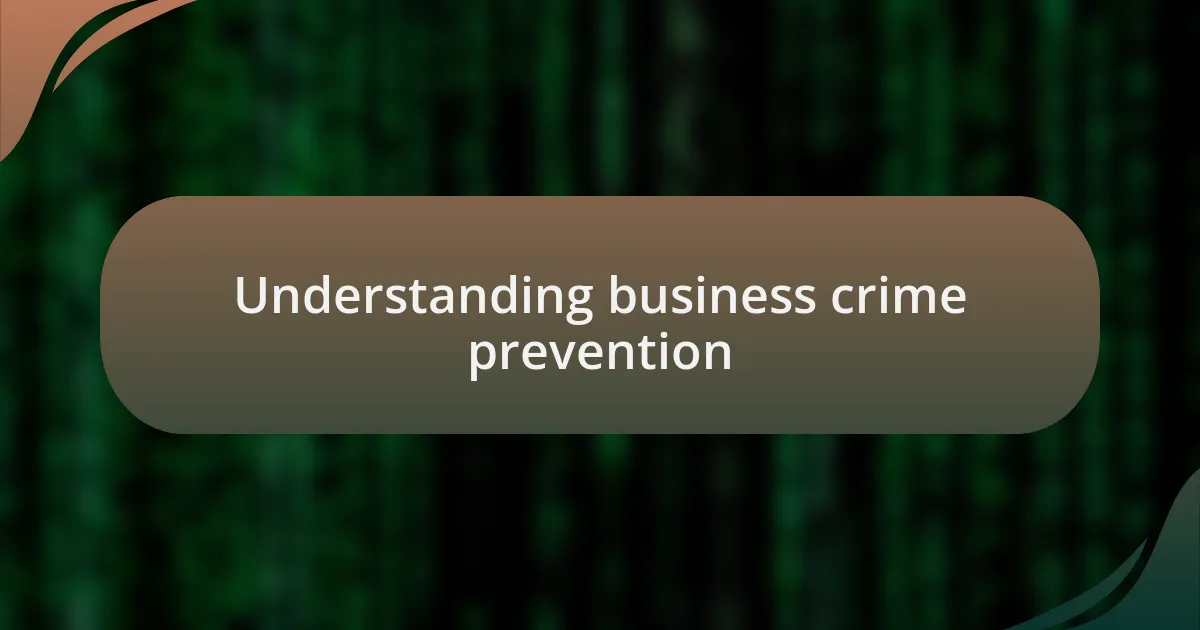
Understanding business crime prevention
Understanding business crime prevention goes beyond simply installing security cameras or locks. It involves a comprehensive approach where awareness is key. I remember attending a workshop where one expert asked, “How well do you know your environment?” That question struck me because I realized that an intimate understanding of one’s surroundings can significantly reduce the chances of crime.
I once attended a session on risk assessment that completely changed my perspective. The facilitator encouraged us to look at our businesses through the eyes of a potential intruder. This exercise forced me to confront vulnerabilities I had overlooked, and it emphasized the importance of regular reviews of security measures. It’s fascinating how engaging with different viewpoints can often pave the way for greater safety.
Implementing effective crime prevention strategies means fostering a culture of security within the organization. Encouraging employees to communicate their concerns creates an atmosphere of vigilance and trust. I’ve seen first-hand how even simple conversations about safety can empower teams to take proactive measures, making everyone a stakeholder in the initiative. Isn’t it reassuring to know that we can transform our businesses into safer spaces together?
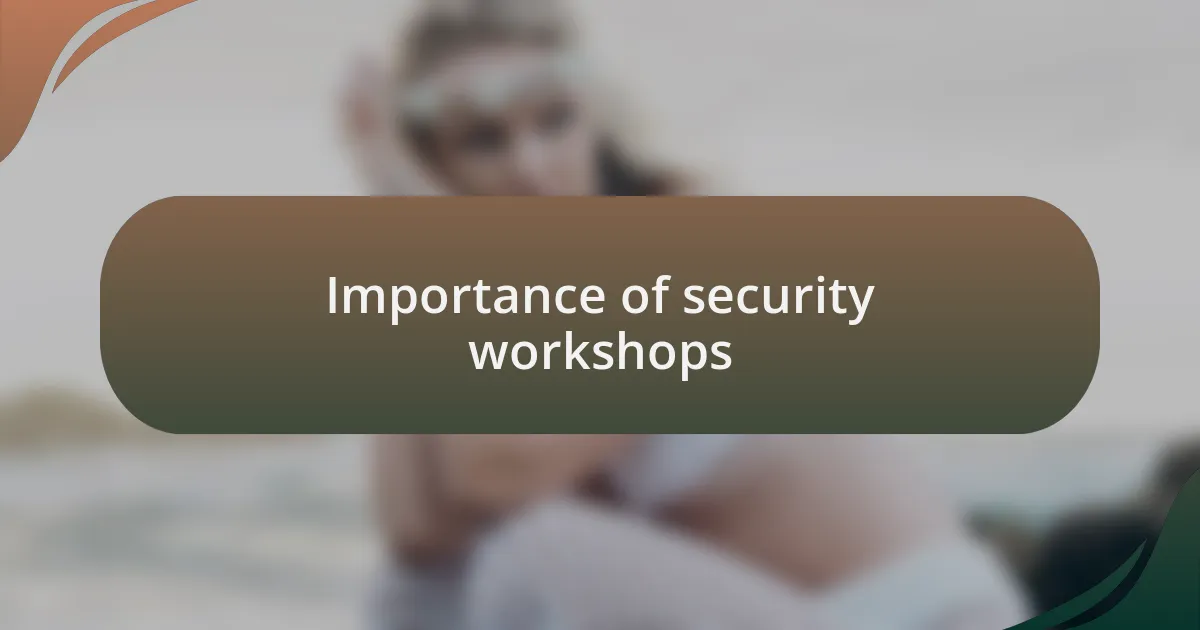
Importance of security workshops
Participating in security workshops has been a game-changer for me. I recall a session that focused on active shooter training, where we practiced response strategies. It was an emotional experience, understanding the weight of the knowledge I gained in that room. It made me realize how crucial these workshops are in preparing us for real-world scenarios and equipping our teams with the tools they need to respond effectively.
The networking opportunities at these workshops cannot be overstated. I remember chatting with a fellow business owner who shared a harrowing experience with a burglary. His insights on what worked for him after the incident opened my eyes to lessons that I hadn’t considered before. This exchange of experiences underscores the importance of security workshops in creating a support system, allowing us to learn from one another’s triumphs and mistakes.
Regularly attending these workshops fosters a proactive mindset towards security. I once went home after a workshop filled with actionable strategies, feeling empowered to tackle our security issues head-on. Why wouldn’t anyone want to feel that sense of control over their business environment? When we prioritize continuous learning about security, we not only protect our assets but also uplift the overall resilience of our businesses.

Key concepts learned from workshops
One key concept that resonated with me during a workshop was the importance of situational awareness. In one session, we practiced identifying potential threats in various scenarios through a hands-on exercise. Reflecting on that experience, it dawned on me how often we go about our daily routines oblivious to our surroundings. This awareness is more than just a skill; it’s a vital mindset that can significantly enhance the safety of our environments.
Another significant takeaway was the role of technology in enhancing security measures. A speaker demonstrated how integrating surveillance systems with advanced analytics can provide real-time insights into suspicious activities. I remember thinking, “Why are we not utilizing these tools more effectively?” Understanding how technology can bolster our safety not only alleviates some fears but also empowers me to adopt more sophisticated security solutions for my business.
One aspect I found particularly powerful was the emphasis on communication during emergencies. A workshop exercise illustrated how coordinated responses among team members could prevent chaos during a crisis. This experience made me realize how crucial it is to establish clear protocols ahead of time. Isn’t it better to have a plan in place, rather than scrambling when an incident occurs? Having those strategies rehearsed creates a sense of confidence and unity, which is invaluable for any team’s resilience.
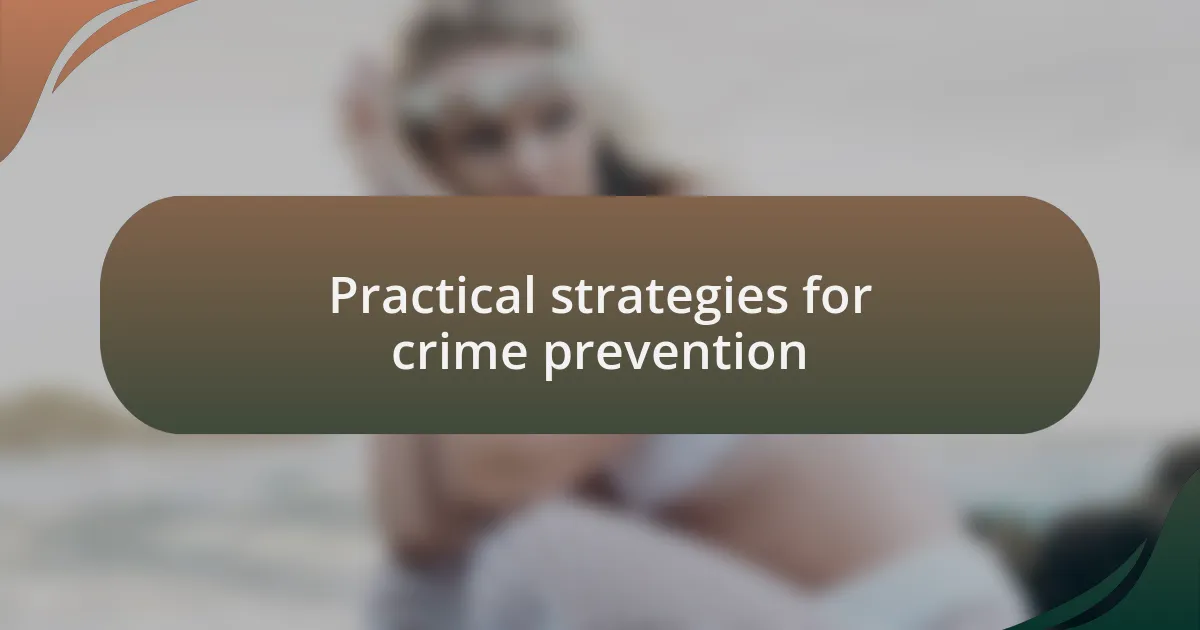
Practical strategies for crime prevention
When I think about practical strategies for crime prevention, I often reflect on the power of employee training. During a workshop, we engaged in role-playing scenarios where staff had to react to potential threats. This experience left a lasting impression on me; it became clear that well-trained employees not only feel more confident in their responses but also become vigilant guardians of the workplace. Is there anything more empowering than knowing your team is prepared to act decisively when it matters most?
Regular security assessments were highlighted as another crucial strategy. I remember a discussion where experts stressed the importance of routine evaluations of one’s security systems. This proactive approach allows businesses to identify vulnerabilities before they are exploited. After attending that workshop, I felt a sense of urgency to review my own security measures. It made me question: when was the last time my security protocols were examined?
Finally, the concept of community engagement resonated deeply with me. In one session, we explored how fostering relationships with local law enforcement can aid in crime prevention. I recall feeling inspired by the stories shared on how neighborhood watch programs have turned communities into safer places. Isn’t it fascinating how collaboration can create a fortress of safety? Building those connections not only enhances trust but also opens lines for timely communication about local crime trends.
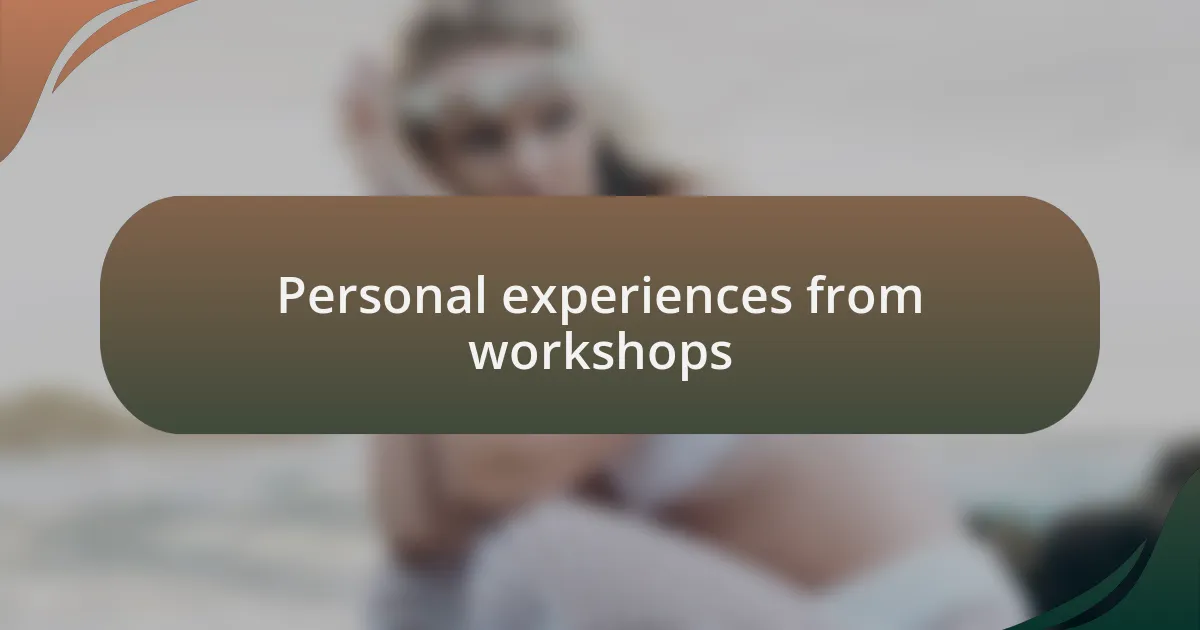
Personal experiences from workshops
During one workshop, I had the chance to participate in a simulation involving a theft scenario. As I acted out my role, my heart raced with adrenaline, making me realize how quickly fear can take hold in high-stress situations. Reflecting on that experience, I understood the vital importance of not only having protocols in place but also actively practicing them. How often do we consider the potential impact of our responses in a real crisis?
Another memorable moment came from a discussion about the psychological factors of crime prevention. A facilitator shared insights about the significance of creating a welcoming atmosphere in our businesses to discourage criminal activity. I couldn’t help but think about my own workplace—laboring to maintain a positive environment felt more than just a best practice; it was about instilling pride and ownership in a shared space. Isn’t it intriguing how something as simple as a smile or a greeting can deter potential wrongdoers?
Lastly, I was particularly moved by a section dedicated to personal safety apps and technology. Hearing testimonials from attendees who had successfully used these tools in their personal and professional lives opened my eyes to the power of technology in enhancing security. When I downloaded a safety app after the workshop, it felt like I was taking charge of my own security—transforming anxiety into proactive measures. Have you ever felt that sense of empowerment when equipped with the right tools for safety?
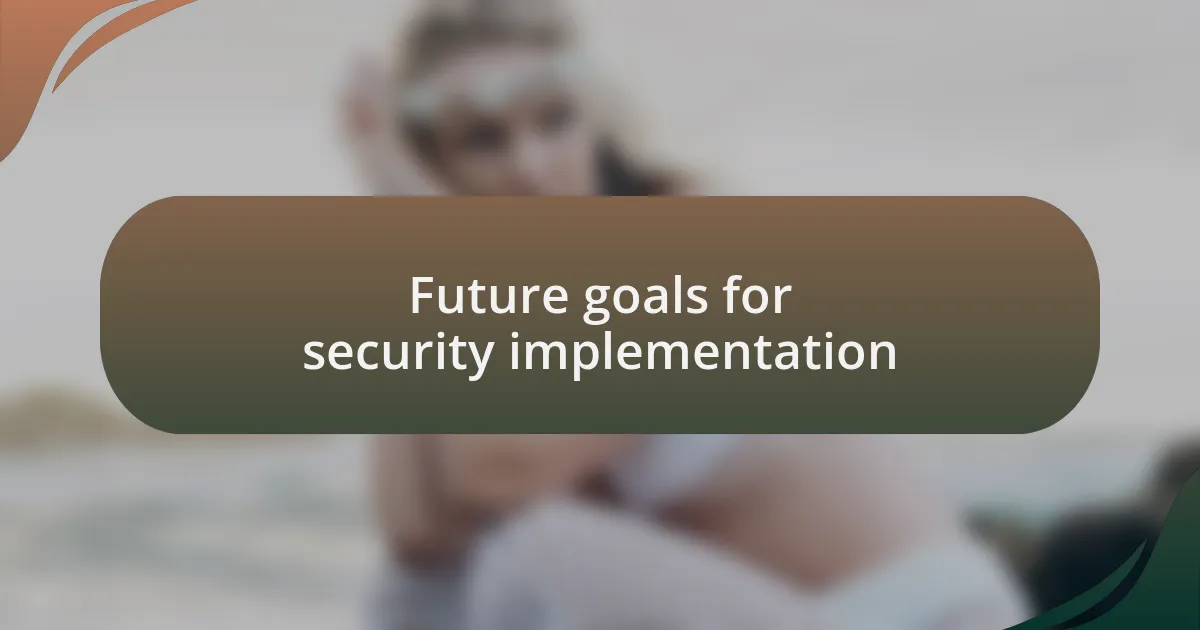
Future goals for security implementation
When I think about the future of security implementation, I envision a proactive approach that integrates comprehensive training for all employees. I remember a time when my team conducted a mock emergency drill, and the chaos that ensued highlighted gaps in our response strategies. It became clear to me that ongoing education and realistic drills are crucial for preparing everyone to handle real incidents with confidence and composure.
Another goal I see on the horizon is the advancement of security technology within our operations. I’ve witnessed firsthand how integrating surveillance video analytics can provide real-time insights into unusual activities. Isn’t it fascinating how data-driven tools can help identify patterns we might never notice? This type of foresight could be a game changer for businesses looking to enhance their crime prevention efforts effectively.
Moreover, fostering collaboration with local law enforcement is increasingly important for future security initiatives. I recall a local workshop where we established a direct line of communication with law enforcement and discussed crime trends in our area. This connection is invaluable; as businesses, we can’t operate in a bubble. How can we better align our strategies with the needs and insights of those who manage public safety? Forming these partnerships could significantly strengthen our collective efforts against crime.